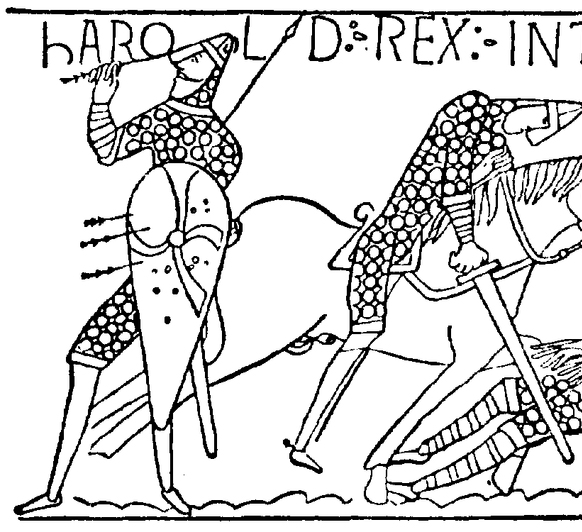The strange death of King Harold II: Propaganda and the problem of legitimacy in the aftermath of the Battle of Hastings
Historian article

How did King Harold II die at the Battle of Hastings? The question is simple enough and the answer is apparently well known. Harold was killed by an arrow which struck him in the eye. His death is depicted clearly on the Bayeux Tapestry in one of its most famous images: as the battle draws to a close, Harold stands underneath his name in the inscription ‘Hic Harold rex interfectus est', head tilted backwards, clutching a golden arrow which protrudes from his face. The scene is so celebrated that it has become one of the iconic images of British history and the ‘arrow in the eye' story, for many of us, is synonymous with 1066 and all that. And so it should be, since Harold's death at Hastings brought about the demise of Anglo-Saxon England and precipitated the greatest turning-point in the history of the British Isles.
Despite the popularity of the ‘arrow in the eye' story, historians have not reached a consensus on how Harold was killed at Hastings. In fact, some of the greatest historians of the Norman Conquest, such as Sir Frank Stenton and David Douglas, were less than convinced by the ‘arrow in the eye' tale, and others, such as Henry Loyn and Frank Barlow, rejected it entirely. At the heart of this controversy lies the ambiguity of the earliest Norman sources. Both William of Jumièges and William of Poitiers, who were writing during the late 1060s and 1070s respectively, skip over Harold's death. William of Poitiers' ‘Deeds of William [the Conqueror]' contains the most detailed account of the battle, and his knowledge of military affairs, informed by his own experience of fighting for the duke in his youth, is impressive. But he does not pay much attention to Harold's death, an unusual...
This resource is FREE for Historian HA Members.
Non HA Members can get instant access for £2.75

